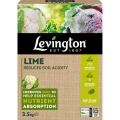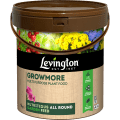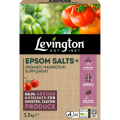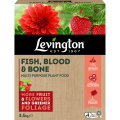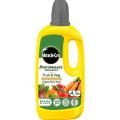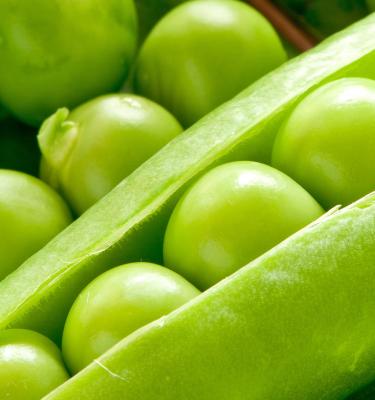

How to grow peas
Nothing beats home-grown peas for their tenderness and taste. That’s because when they are picked, their sugars start to turn to starch and so they quickly loose their sweetness and flavour. Pick them when small, steam within an hour of picking with a sprig of mint and you won’t taste any better.
Pea varieties
There are lots of different types of peas and numerous varieties. To produce crops all summer long, start by sowing an early variety, followed by a main crop.
Mangetout peas are eaten pod and all, picked before the peas have developed. Sugar snaps are also eaten whole, but once the peas have swelled. Both are generally easier to grow than podding peas, and are definitely worth growing if you’ve had problems with podding peas in the past.
- Early: Early Onward, Feltham First, Hurst Greenshaft, Little Marvel
- Main crop: Cavalier, Kelvedon Wonder, Onward
- Mangetout: Delikata, Oregon Sugar Pod
- Sugar snap: Sugar Ann, Sugar Snap

Cultivation of peas
Peas need a sunny position that is sheltered from strong winds, to ensure insects can pollinate the flowers.
Improve the soil with lots of garden compost to help keep the soil moist, but free draining. Peas, being legumes, prefer an alkaline to neutral soil (pH7 and greater); add lime to acidic soils in late winter.
Peas need plenty of soil moisture, especially at flowering and when the pods are filling, otherwise the crops are poor and the peas are small, dry and tasteless. To ensure they don’t go short of water, dig a trench approximately 30cm (12in) deep in autumn and fill it with moisture-holding material, such as garden compost, shredded newspaper and un-rotted garden or kitchen waste. Fill the trench with soil a fortnight before sowing or planting out.
When to sow peas
You can start sowing in March, providing the soil is warm enough. You can pre-warm it by covering with cloches or sheets of polythene 2-3 weeks before sowing. For an earlier start, you can sow the seeds indoors in small pots filled with potting compost.
The easiest way to sow is to dig out a flat-bottomed trench 5cm (2in) deep and 20-25cm (8-10in) wide. Lightly fork over the bottom of the trench, water the soil and then sow the seeds evenly, roughly 7.5cm (3in) apart, pressing them lightly into the soil. Fill the trench with soil and lightly firm down. Sow at fortnightly intervals to give a succession of crops throughout summer. By growing different varieties and sowing at different times of year, you can pick fresh peas from June until October.
Choosing your spot and which peas to grow
Your peas are going to need a sunny, moisture-retaining and nutrient-rich position and you will need to support taller varieties so make sure there is plenty of room for that.
As with most grow your owns, there’s a choice of variety from early-maturing to super sweetness, so take a little time to choose which ones will suit you best. Before you are ready to sow, make sure your dig and prepare the ground, adding plenty of compost or well-rotted manure well in advance.
If you are planting straight into the ground, do so in spring (March to June) making sure the soil is warm and the seedlings are well protected from cold and frost. Your seeds will rot if you plant into cold soil.
Sowing peas
You can start sowing in March, providing the soil is warm enough. You can pre-warm it by covering with cloches or sheets of polythene 2-3 weeks before sowing.
For an earlier start, you can sow the seeds indoors in small pots or modules filled with potting compost.
The easiest way to sow is to dig out a flat-bottomed trench 5cm (2in) deep and 20-25cm (8-10in) wide. Lightly fork over the bottom of the trench, water the soil and then sow the seeds evenly, roughly 7.5cm (3in) apart, pressing them lightly into the soil. Fill the trench with soil and lightly firm down.
Sow at fortnightly intervals to give a succession of crops throughout summer.
By growing different varieties and sowing at different times of year, you can pick fresh peas from June until October.
How to care for peas
Water well during dry periods, especially during flowering and pod set, giving the soil a good soaking once or twice a week. Mulch the soil around the plants to preserve soil moisture. You can also feed weekly with a high potassium liquid feed (such as a tomato feed) to promote bigger crops.
Apart from dwarf varieties, peas need supports for the plants to grow up. Insert twiggy branches alongside the plants when they’re 7.5-10cm (3-4") high. Pea netting supported by stout canes is another option, but it’s very difficult to untangle the plants at the end of the growing season. Chicken wire is a better option. Lightweight wooden trellis or willow panels are attractive alternatives, especially when growing peas as an ornamental feature.
When to harvest peas
As they start to mature, keep an eye on your peas as the earlier they are picked the sweeter they’ll be. Don’t rest on your laurels though, harvest regularly to encourage your plants to keep on producing.
Start from the bottom of the plant where the peas mature first and work your way up. Although you can freeze your peas, they really are at their tastiest eaten straightaway.
A few facts about peas
- Round, smoother pea seeds are hardier than wrinkled ones, which tend to be better for sweetness.
- They’ve been around a long, long time! So long in fact that peas were discovered in Egyptian tombs.
- The pea plant tendrils are edible.
- One serving of peas contains as much vitamin C as two large apples and more fibre than a slice of wholemeal bread.
Common pest and disease problems with peas
Powdery mildew
Powdery mildew is a fungal disease that appears as a white mildew on pea plants, stunting growth and causing leaves to shrivel. Drought-stressed plants are more susceptible to this disease.
- Dig organic material into the soil before planting to improve soil water retention
- Space plants when planting to ensure good air circulation
- Remove any affected growth promptly
- Water regularly in dry periods
Pea Moth
Pea moths lay their eggs on pea flowers. The larvae live in the pods, feeding on the developing peas. Caterpillars can be seen inside pods when shelled.
- Grow crops under insect-proof mesh
- Early spring and early summer sowings are less affected
Mice
Mice will dig up and eat peas sown in the ground.
- Cover the ground with a thick layer of prickly holly leaves
- Start seeds off in pots out of reach of mice and plant them out as seedlings
Pigeons
Pigeons can strip the leaves off pea plants, leaving them bare.
- Grow plants under netting
Key features of peas
| Flowering season(s) | Spring, Summer |
|---|---|
| Foliage season(s) | Spring, Summer, Autumn |
| Sunlight | Full sun |
| Soil type | Chalky, Clay, Loamy, Sandy |
| Soil pH | Alkaline |
| Soil moisture | Moist but well-drained |
| Ultimate height | Up to 1.2m (4ft) |
| Ultimate spread | Up to 45cm (18in) |
| Time to ultimate height | 6 months |
